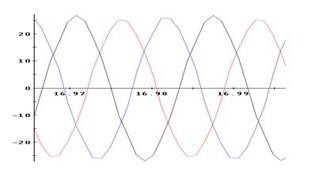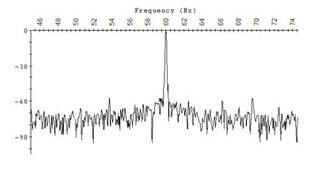Motor Current Signature Analysis (MCSA for short) has proven to be an extremely valuable Prognostic Maintenance tool. Transmission-related mechanical faults are easily detected using a demodulated current spectrum without the need to access the transmission itself. Although it is a relatively new technology, it is rapidly gaining popularity among users of electromechanical equipment especialy in applications where it is not possible to access the equipment directly like underwater pumps and drilling rigs.

The MCSA method is, in simple terms, the process by which the waveform of a motor current is recorded and analyzed in the frequency domain. It first appeared around 1985 and proved reliable in diagnosing rotor faults and stator / rotor gap problems in electric motors.
The characteristics of the motor current are recorded as a function of time. In the corresponding graph of the current, the width is placed on the “Y” axis and the time on the “X” axis. The result is a typical sinusoidal wave current as shown in Figure 1.
For data analysis, a Fast Fourier Transform (FFT) is performed. FFT is a mathematical operation that aims to collect frequency information from the time domain and convert it to the frequency domain. An example of an FFT spectrum is shown in Figure 2.
 |
 |
|---|---|
| Fig. 1: Time Series | Fig. 2: FFT |
Graph mapping remains the most accurate method for detecting a problem on a machine. The ability to have reference data when the machine is running smoothly is ideal, and comparing data with similar machines is also very efficient. And as records and statistics continue to be collected, there may be increased vigilance for different types of equipment.
Integration into a Preventive Maintenance program
Although the MCSA method is obviously attractive, questions may arise as to how a Maintenance program will fit and benefit. Some of these questions could be: Why bother finding mechanical faults with a current signal, since I can find them with technologies such as vibration analysis, ultrasound, or thermography? How reliable is the data generated and how much can it replace those of vibration analysis?
In any diagnostic technology, there are advantages and disadvantages. Each technology applied will give a more complete picture of the condition of the equipment.
An advantage of this technology (since the sensors used - common current transformers - are placed in the electrical panel of the equipment), is its use in remote equipment locations or in areas where the equipment is not accessible during normal operations (for example submersible pumps ).
Part of any powerful Predictive Maintenance program is the ability to control a defect with more than one technology.
This not only ensures the validity of the diagnosis, but also helps to make the recommendation for repair more accurate and clear. The importance of verification with a second technology is most evident in a critical piece of equipment, which requires production to be stopped for repair.
